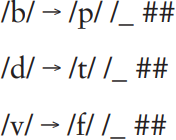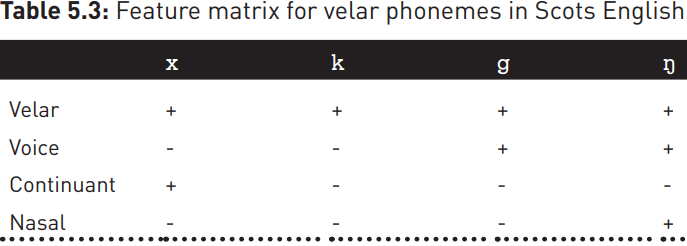

Grammar


Tenses


Present

Present Simple

Present Continuous

Present Perfect

Present Perfect Continuous


Past

Past Continuous

Past Perfect

Past Perfect Continuous

Past Simple


Future

Future Simple

Future Continuous

Future Perfect

Future Perfect Continuous

Passive and Active


Parts Of Speech


Nouns

Countable and uncountable nouns

Verbal nouns

Singular and Plural nouns

Proper nouns

Nouns gender

Nouns definition

Concrete nouns

Abstract nouns

Common nouns

Collective nouns

Definition Of Nouns


Verbs

Stative and dynamic verbs

Finite and nonfinite verbs

To be verbs

Transitive and intransitive verbs

Auxiliary verbs

Modal verbs

Regular and irregular verbs

Action verbs


Adverbs

Relative adverbs

Interrogative adverbs

Adverbs of time

Adverbs of place

Adverbs of reason

Adverbs of quantity

Adverbs of manner

Adverbs of frequency

Adverbs of affirmation


Adjectives

Quantitative adjective

Proper adjective

Possessive adjective

Numeral adjective

Interrogative adjective

Distributive adjective

Descriptive adjective

Demonstrative adjective


Pronouns

Subject pronoun

Relative pronoun

Reflexive pronoun

Reciprocal pronoun

Possessive pronoun

Personal pronoun

Interrogative pronoun

Indefinite pronoun

Emphatic pronoun

Distributive pronoun

Demonstrative pronoun


Pre Position


Preposition by function

Time preposition

Reason preposition

Possession preposition

Place preposition

Phrases preposition

Origin preposition

Measure preposition

Direction preposition

Contrast preposition

Agent preposition


Preposition by construction

Simple preposition

Phrase preposition

Double preposition

Compound preposition


Conjunctions

Subordinating conjunction

Correlative conjunction

Coordinating conjunction

Conjunctive adverbs


Interjections

Express calling interjection


Grammar Rules

Preference

Requests and offers

wishes

Be used to

Some and any

Could have done

Describing people

Giving advices

Possession

Comparative and superlative

Giving Reason

Making Suggestions

Apologizing

Forming questions

Since and for

Directions

Obligation

Adverbials

invitation

Articles

Imaginary condition

Zero conditional

First conditional

Second conditional

Third conditional

Reported speech


Linguistics

Phonetics

Phonology


Semantics


Pragmatics

Linguistics fields

Syntax

Morphology

Semantics

pragmatics

History

Writing

Grammar

Phonetics and Phonology


Reading Comprehension

Elementary

Intermediate

Advanced
Distinctive features and natural classes
المؤلف:
David Hornsby
المصدر:
Linguistics A complete introduction
الجزء والصفحة:
98-5
2023-12-16
812
Distinctive features and natural classes
In some of the examples above, we have seen that certain groups of sounds have similar properties, or tend to behave in similar ways. One set of consonants was affected, for example, by a rule involving word-final position in German, which we could identify by a series of rules:

These rules should be read as ‘/b/ becomes /p/ in the environment of a word boundary’ and so on, and we could in principle set out similar rules for all the consonants affected by the devoicing rule, but such an approach misses an obvious generalization about all these consonant pairs, namely that those to the left of the arrow are all voiced and those to the right are all voiceless. We could therefore restate the rule rather more economically in terms of a single distinctive feature ±[voice].

The sounds affected by this rule form part of the natural class of voiced consonants. We can define a natural class as a group of speech sounds which share the same specification for one or more features. Natural classes often share properties cross-linguistically. Dutch, Russian and Polish, for example, all have a word-final consonant devoicing rule, as do some French dialects. Another natural class is nasals, the feature [+nasal] being shared by  , among others. We can extend the principle further and establish feature matrices for phonemes, as for example in Table 5.3 for the velar consonants of Scots English. The feature ±[continuant] distinguishes oral and nasal stops [-continuant], for which the airflow in the vocal tract is blocked, from all other sounds, which allow continuous airflow and are therefore [+continuant]:
, among others. We can extend the principle further and establish feature matrices for phonemes, as for example in Table 5.3 for the velar consonants of Scots English. The feature ±[continuant] distinguishes oral and nasal stops [-continuant], for which the airflow in the vocal tract is blocked, from all other sounds, which allow continuous airflow and are therefore [+continuant]:

The four phonemes form part of a single class by virtue of sharing the feature specification [+velar]. Note that the specification [+voice] is redundant for  , as all nasals are voiced in English, but this feature is distinctive for /k/ and /g/. The feature ± [aspirated] is not included in our matrix because aspiration is not distinctive in English: its presence or absence in certain environments for voiceless plosives is entirely predictable and not a property of the phoneme itself, as it would be in Thai, where aspiration is phonemic.
, as all nasals are voiced in English, but this feature is distinctive for /k/ and /g/. The feature ± [aspirated] is not included in our matrix because aspiration is not distinctive in English: its presence or absence in certain environments for voiceless plosives is entirely predictable and not a property of the phoneme itself, as it would be in Thai, where aspiration is phonemic.
Attempts have been made to establish a universal feature set from which the phonemes of all the world’s languages could be defined. A first set was proposed in 1952 by Jakobson, Fant and Halle and was refined for the description of English by Chomsky and Halle in 1968. This set has since undergone a number of changes, with putatively universal features such as ±[diffuse] or ±[compact] having been largely abandoned. Some have criticized the emphasis in most feature systems on binarity: it is not entirely clear that ± features are appropriate for vowels, or that they are well equipped to deal with phonemic tone in languages such as Hokkien or Vietnamese. But there is no doubt that features have a role in identifying natural classes, and in capturing important cross-linguistic generalizations.